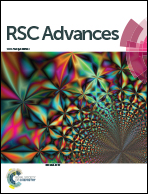Carbon nanotube based 3-dimensional hierarchical field emitter structure
Abstract
Carbon nanotubes (CNT) are known to offer exciting electronic, electrical, mechanical and chemical properties and have found their way in a variety of applications. Field emitter is one such application in which the use of CNTs is widely appreciated. High current density field emitters with good stability have been the focus of many researchers for more than a decade. In the present study, a 3-dimensional (3D) hierarchical structure of field emitter has been demonstrated. Copper oxide (CuO) nanotubes and nanorods were synthesized directly on a copper foil substrate using a simple, easy to scale-up chemical process and CNTs were grown on these CuO nanostructures. A comparative study of the field emission behaviour of these emitters, along with its corresponding 2-dimensional (2D) structure, i.e. CNTs grown on copper foil, was performed. The basic idea behind developing the 3D architecture was to enhance the surface area available for CNT growth so that a higher emission current could be achieved without increasing the foot-print of the field emitter device. Emission current density was measured to be 0.87 mA cm−2, 3.11 mA cm−2 and 0.63 mA cm−2 for CNTs on copper foils, CNTs on CuO nanotubes and CNTs on CuO nanorods, respectively.


 Please wait while we load your content...
Please wait while we load your content...